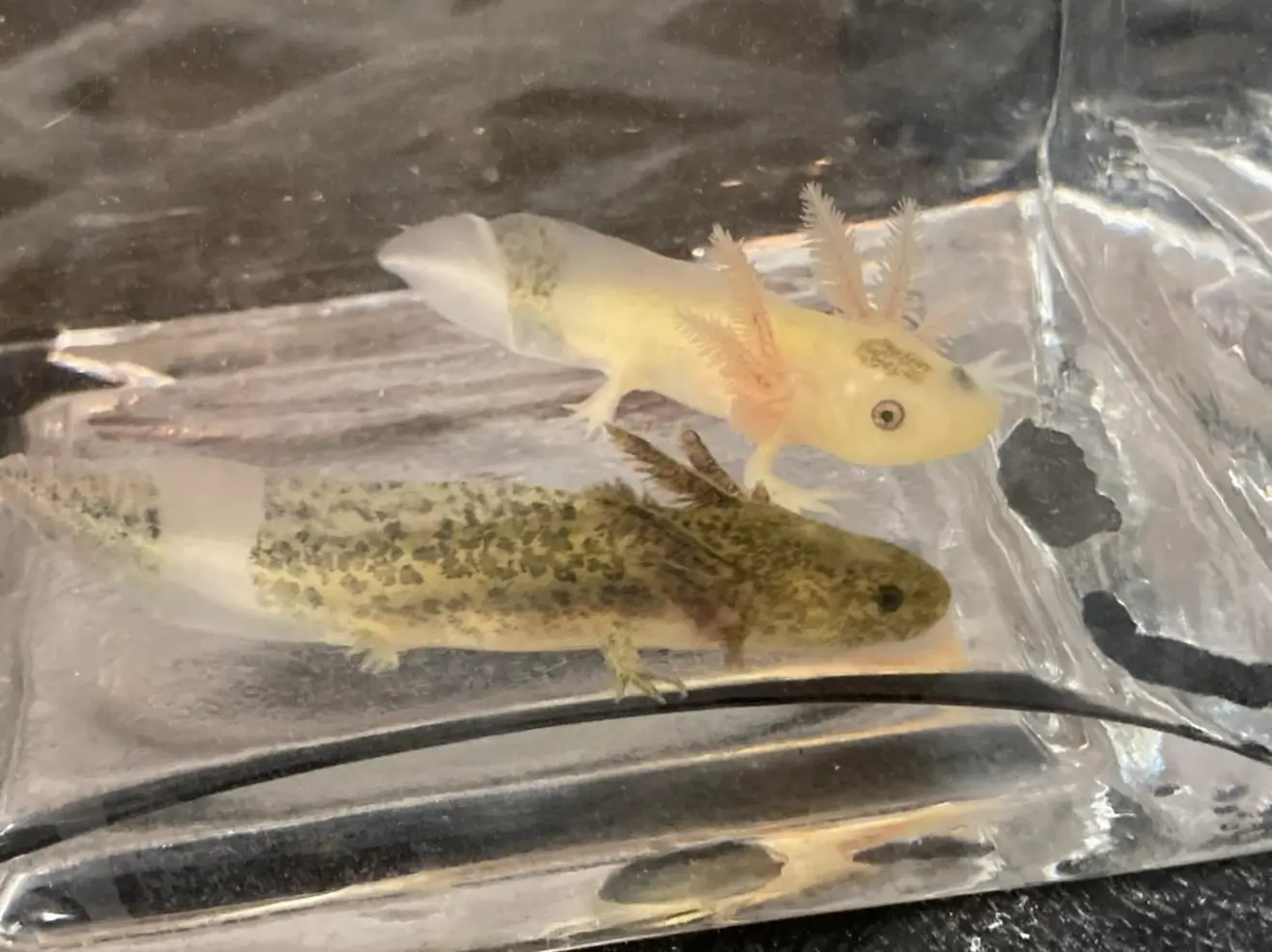Axolotls, Ambystoma mexicanum, have become popular in recent years and are now one of the most commonly kept amphibians.
Breeders have been selecting for different colors and body shapes for two main reasons: research and market demand. Most morphs come from selective breeding, but some are produced with lab techniques, like firefly axolotls.
They are created through artificial methods rather than traditional crossings. The move from selective breeding to lab alteration brings up clear questions about animal welfare, sourcing, and what responsible ownership should mean.
Let’s discuss this in detail!
Table of Contents
What Exactly Are Firefly Axolotls?
You may think that firefly axolotls are a hybrid of axolotls and fireflies. But they are not. These are genetically modified organisms with fluorescence characteristics. The parts of their skin and tissues glow when you shine blue or UV light on them.
That glow comes from adding a foreign gene (fluorescent protein gene from jellyfish) into embryos. It is a lab method rather than the selective breeding most hobbyist morphs come from.
The swapping of genes is done at the embryonic stage of axolotl’s development. So they are not just a new color variety you get by pairing two pets. But they are genetically altered animals.
Lloyd Strohl II created the first firefly axolotl for his research, in which he experimented on axolotls. The purpose of the study was to observe patterns of melanocytes (pigment-producing cells) in leucistic axolotls, particularly in mosaics. Firefly axolotl was not the goal of the research but the result of investigations.
These kinds of experiments create mosaic axolotls with a unique coloration pattern. The darker body contrasts with a lighter tail. These organisms eventually made their way into the pet trade and raised many concerns.
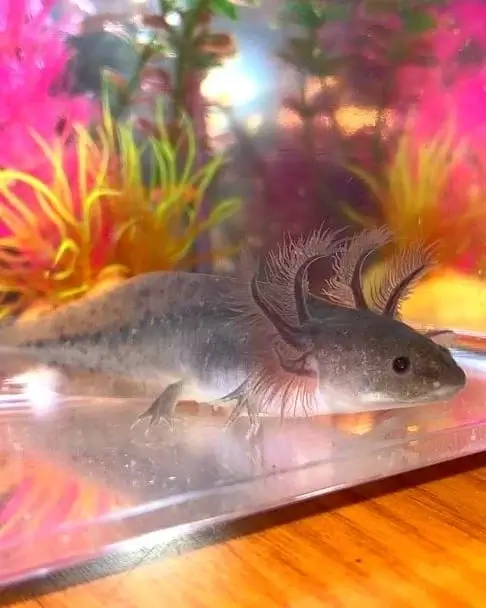
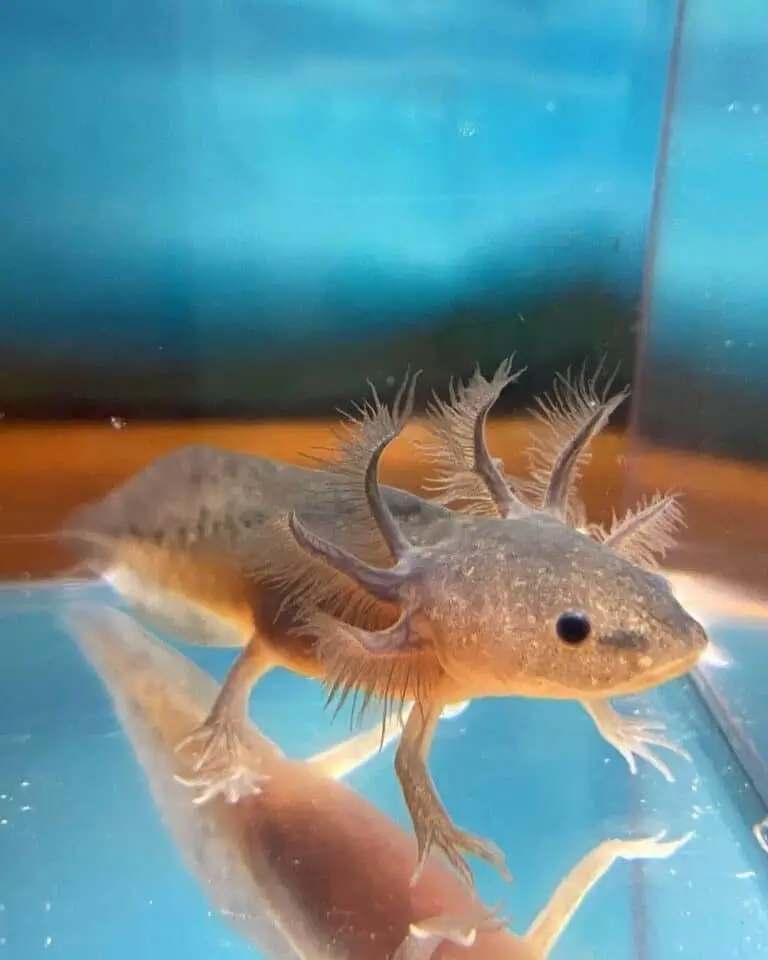
The Ethical Concerns
1. Animal Welfare and Pain
Firefly axolotls involve swapping body parts, like tails, using skin grafts. The original method was done on embryos before hatching, when they likely couldn’t feel pain. But some breeders today do this on hatched axolotls, using anesthesia during surgery but no pain relief afterward. That kind of procedure is done purely for looks and raises serious welfare concerns.
Doing surgery on living, feeling animals simply to make them look different doesn’t sit right with most people, myself included.
2. Health Risks
Genetic modifications are uncertain and always carry risks. Grafting can introduce deformities, health issues, or complications. And firefly modifications themselves aren’t without risk of rejection or poor healing.
3. Commercial Exploitation
In the early days, firefly morphs were used for research (to study pigment cells) and not bred for sale. That shift matters. Now these morphs have become market goods instead of research subjects. Many are made purely for novelty or profit. That shift from “purposeful science” to “aesthetic commerce” triggers valid ethical concerns.
4. Ecosystem and Conservation Considerations
Axolotls are endangered in the wild. The captive breeding removes pressure on wild populations. But poor thought-out breeding practices, like novelty morphs can distract from conservation priorities.
Why Do People Want Them?
People pay top dollar for firefly axolotls, and it’s easy to see why. These glowing pets catch your eye immediately. The glow isn’t natural but man-made.
Sellers often hype them as rare or one-of-a-kind, even if that’s true or not. That hype spreads quickly.
The fascination with something unusual is normal. But before buying into the trend, you should pause and ask: Is it right to value novelty over ethics?
What Do Firefly Axolotls Look Like?
They look like any other pet axolotl, smiling face, gills, and a similar body. But usually the tail is lighter due to fluorescent proteins that glow green under UV or black light. That glowing tail is what gave them the “firefly” nickname.
A lot of them show a sharp contrast like dark body, glowing tail, or vice versa. Some even reverse that pattern. Others have a more blended glow, patches of neon green or blue here and there.
| Body | Darker tones (wild-type) or standard morphs, looks like a usual axolotl. |
| Tail | Light-colored, often pale or albino-like, with fluorescent proteins. |
| Under UV/Black Light | Tail glows, bright green or sometimes blue/pink depending on the line. |
| Contrast | Sharp division between body and tail, sometimes reversed or mixed patterns. |
Firefly Axolotl Lifespan and Health Issues
The lifespan is similar to other axolotls. They can live 10 to 15 years, or even up to 20 with optimal care. But they are more fragile and often face:
- Swimming and skeletal problems like spinal deformities.
- General diseases that affect all axolotls:
- Bacterial infections worsened by poor water conditions.
- Fungal infections that appear as fuzzy white patches.
- Impaction, where they swallow gravel or other materials, causing blockages.
- Stress syndrome, from bad water quality or overcrowding. It can weaken their immune system.
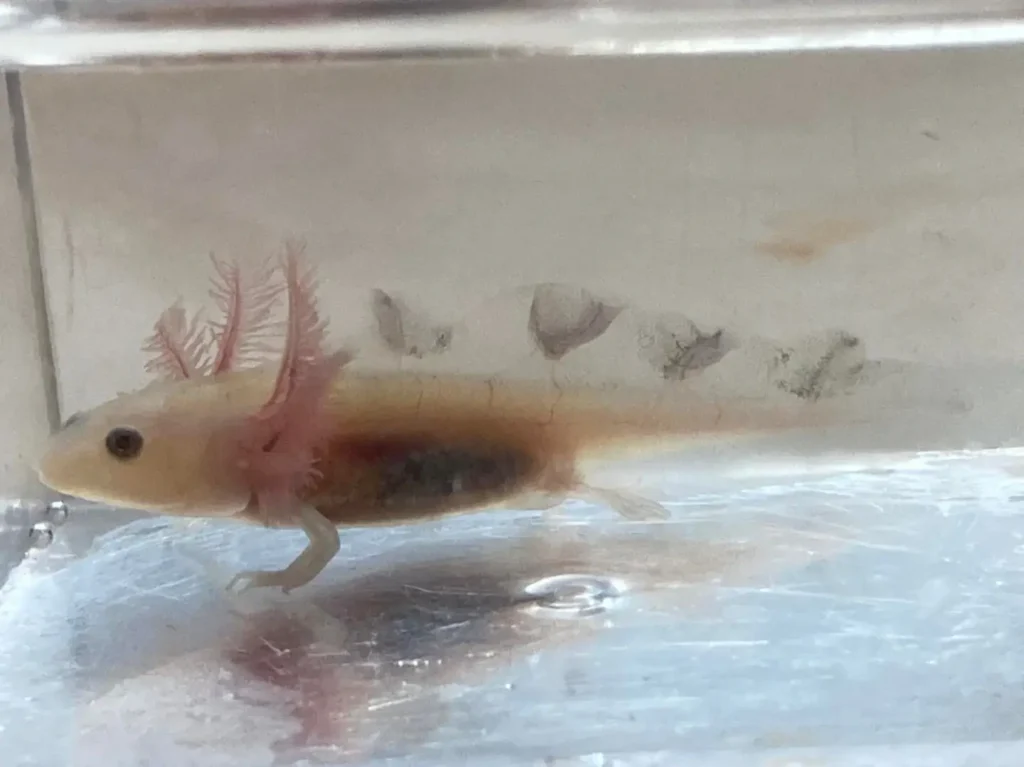
How to Care for Firefly Axolotls?
Firefly axolotls need care just like any other axolotls. You need to take care of:
1. Tank and Water
The tank size should at least 30 gallons, though 40 is better. Axolotls produce a lot of waste and need floor space to move around. Cycling is a must!
Keep water cool between 60 to 65 °F (16–18 °C), and aim for clean, stable pH between 6.5 and 8. A gentle sponge filter is best since they don’t like strong currents.
2. Substrate and Decor
Avoid gravel, it can get swallowed and cause blockages. Fine sand is safer, and hiding spots like smooth caves or plant covers help them feel secure. You can also go for bare bottom tank or rocks that are bigger than their mouth.
3. Diet and Feeding
Axolotls are carnivores. Feed them worms, bloodworms, or axolotl-specific sinking pellets. Juveniles need daily feeding and adults can be fed 2–3 times a week.
Always offer food close to them, as they aren’t the best hunters. Also, clear out leftovers to keep the water clean.
4. Maintenance and Health
Do weekly partial water changes to keep nitrates low. Watch for signs like fungus, red patches, or odd behavior. These can point to infection, impaction, or stress.
FAQs
How Much Does A Firefly Axolotl Cost?
Firefly axolotls’ price can vary ($100-$500). Age, size, color pattern, rarity, and the breeder’s reputation all influence the cost.
Are Firefly Axolotls Ethical?
I think, NO. The original firefly axolotls were made via embryonic skin grafting before they could feel pain for research. Today, by doing grafts on hatchlings. Even if sedated during surgery, they’re typically not given pain relief afterward. Also, the procedures are done for aesthetic reasons. That has raised strong objections from many in the axolotl community.
How Are Firefly Axolotls Made?
The “firefly” look comes from grafting tail or tissue between embryos. Breeders usually go for a dark body with a glowing or pale tail. It creates a chimera (an organism with two genetic cell lines). The original method involved swapping tissues at the embryonic stage for melanocyte research. Recently, surgeries and skin grafting is used.
What Is The Rarest Axolotl Color In Real Life?
There’s no single “rarest” axolotl color, but some are hard to find. The mosaic morph, its mottled mix of pigments from fused embryos, is considered the rarest. Chimera axolotls, half one color and half another, are nearly as elusive. Other rare variants are lavender (aka Silver Dalmatian) and non-albino golden (NAG) morphs. Claims of blue axolotls are myths, and they are not real because true blue pigment doesn’t exist in nature.
Also Read:
The Axolotl Diaries
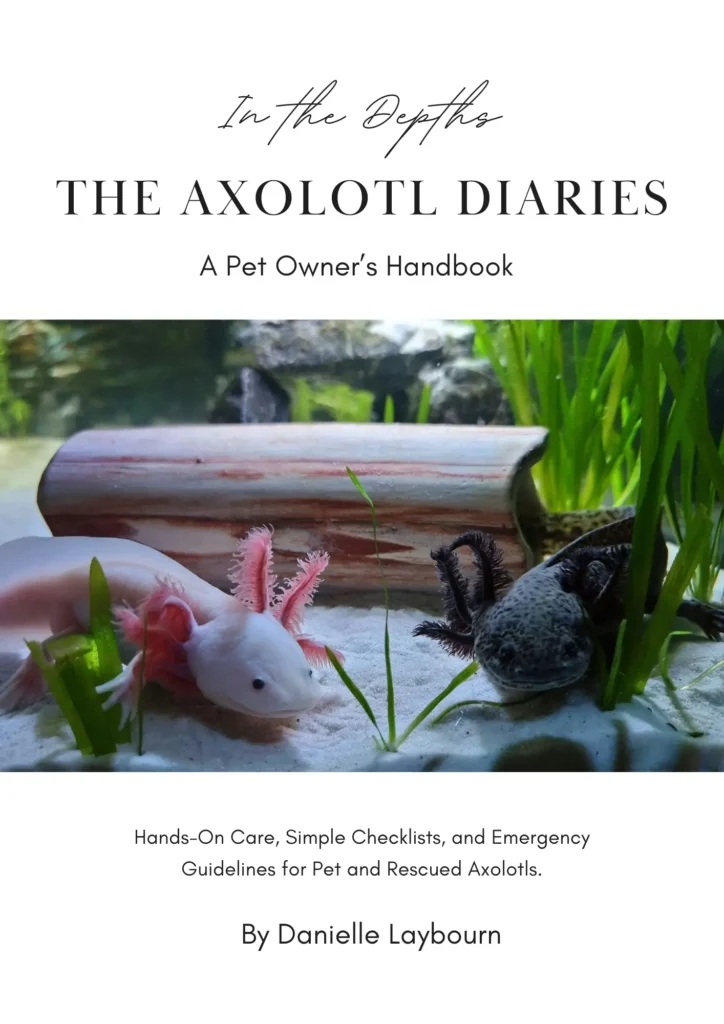
A clear, step-by-step handbook (50+ pages) about axolotl care that covers basics, safe tank requirements, cycling, feeding, common health issues, and more.
Rescue-informed and vet-aware. For anyone who wants to raise a healthy, happy axolotl.
Find everything in plain language, backed by real experience.
Grab printable cheatsheets, practical tips, and easy troubleshooting guide inside!
Price: $14.99
Final Thoughts
Firefly axolotls bring up a question: what lines are we comfortable crossing for novelty? The first fireflies were made in embryos that couldn’t feel pain for research purpose.
But now they’re often surgically created on hatched axolotls, without pain relief and purely for looks, and I think it’s unethical.
A glowing tail might seem magical, but it comes at the cost of discomfort, weaker health, and cosmetic surgeries.
We need to pause and ask if the spectacle is really worth it. I always promote ethical breeding practices, and you must check if it aligns with your values!

